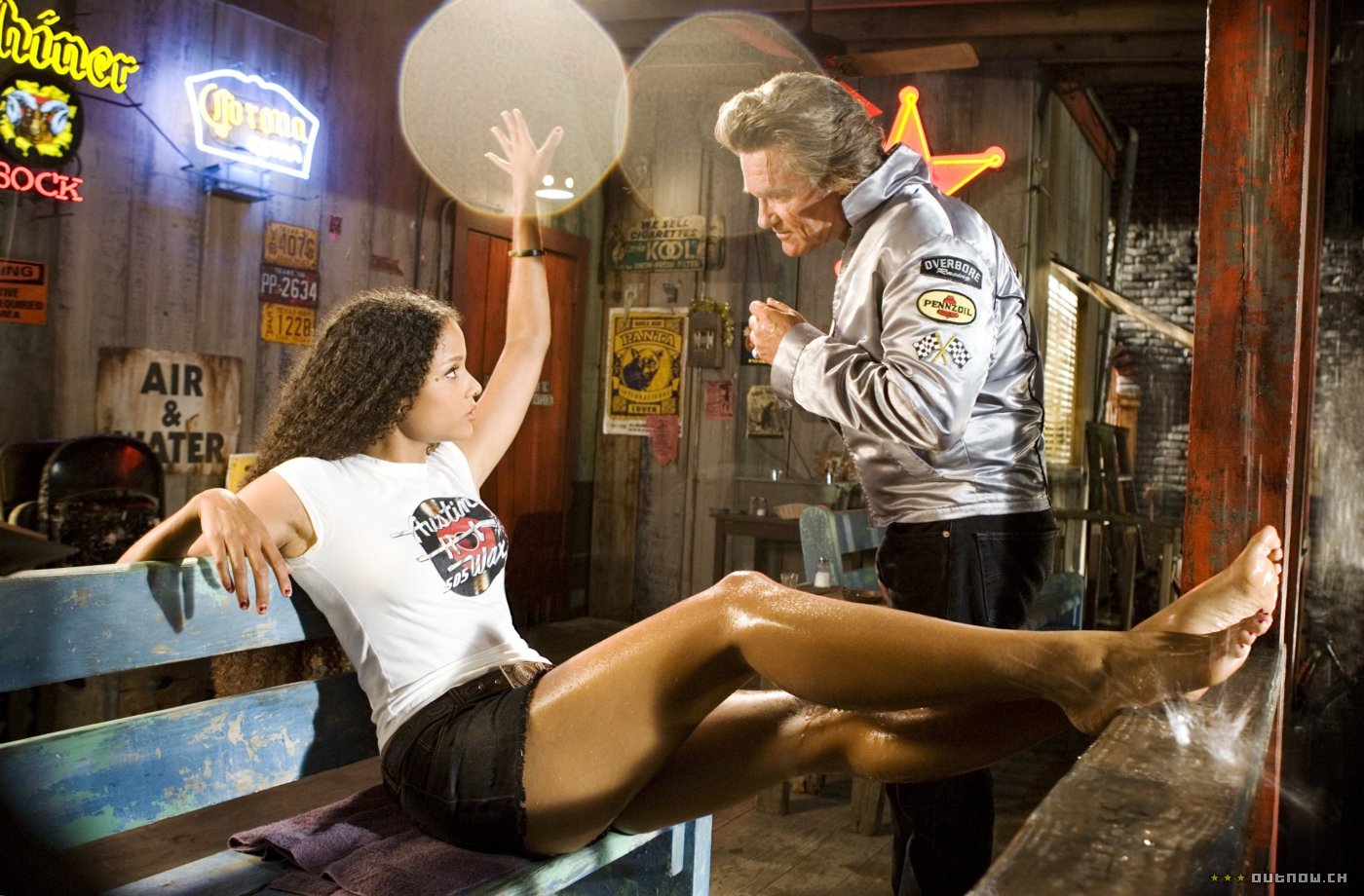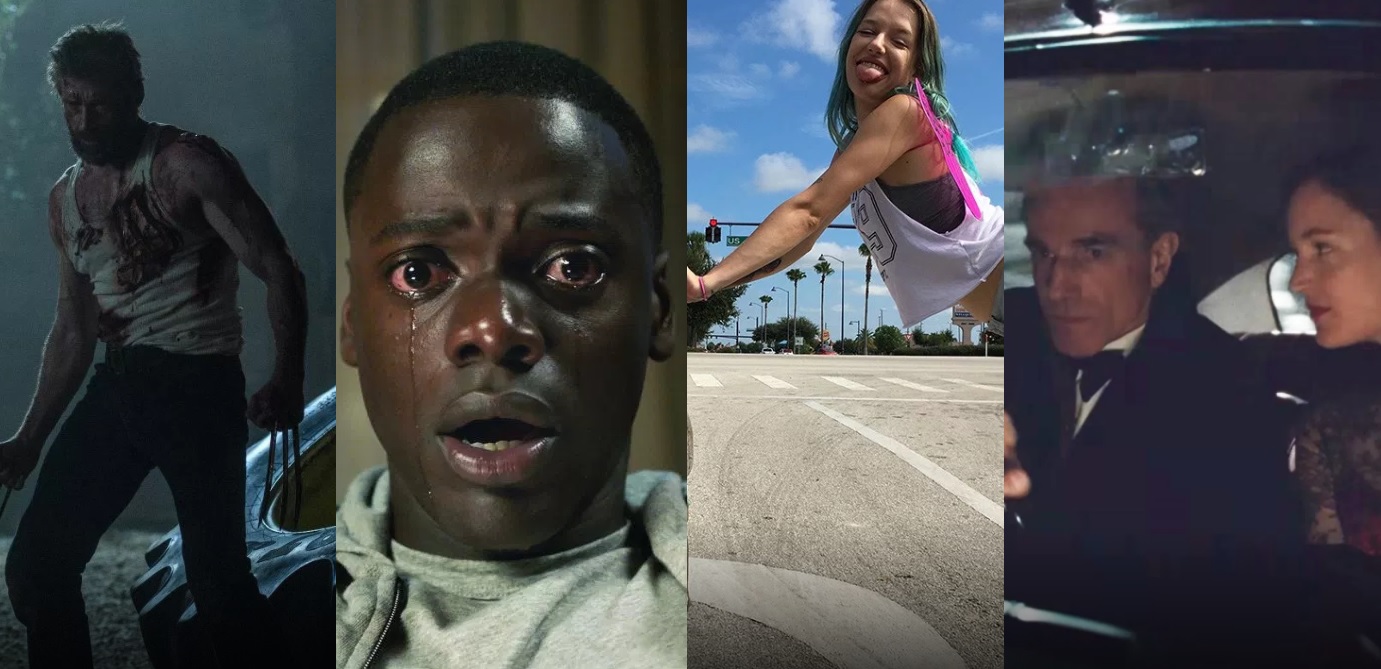When Quentin Tarantino contributed his Death Proof to the Grindhouse double bill ten years ago today, it signaled a change in his career. Up until this point, his films had by and large been well-crafted modern tributes to the exploitation films that Tarantino grew up with. He became popular by being a quirky remixer of tropes from 1970s garbage-budget cinema that filled a niche in the zeitgeist of the increasingly grungy 1990s. With Kill Bill, Vol. 2, Tarantino dipped his toe into straight up subversion, but Death Proof is the film that laid bare the thesis statement for the latter half of his career, not just giving us an exploitation film, but a simultaneous tribute and reinvention of the entire genre.
The first half of Death Proof is actually fairly standard-to-that-point Tarantino fare. A group of scantily-clad women go down to their local dive bar, and we get to know them over the course of roughly 45 minutes. We are also introduced to Stuntman Mike (Kurt Russell), a relic of a cinematic era where stunts were actually performed and a quiet obsessor over the group of women. After a lot of trademark Tarantino banter, Stuntman Mike starts to drive a woman home in his “death proof” stunt car, only to murder her by whipping her around the inside of the unsecure passenger seat. He then hunts down the group of women and collides with their car with his, keeping him alive while they die in horrifically brutal ways.
This first half is shown through purposely grainy film stock, complete with continuity and sound design errors meant to evoke the feeling of watching a low budget movie on a poorly maintained film reel. And through Stuntman Mike we are treated to not just a tribute to classic exploitation cinema: this is an exploitation film, right on down to the cheap yet remarkably gory special effects of the murderous collision. There’s even a Wilhelm scream, just in case your understanding of the artificiality of the proceedings was ever in question. And while that little bit of strict recreation of the aesthetics of that particular subgenre would be impressive in its own right, the second half of Death Proof is what turns the film into a masterpiece.
The film flashes forward a couple months to a new group of women, but the quality of the film stock shifts, showing a short scene with Stuntman Mike stalking the women in stark black and white before becoming more modern and vibrantly colorful. After getting to know these women in much the same way as we did with the previous group, we’re treated to the women attempting a stunt in which one of the women is strapped to the roof of a car with the driver’s foot pressed to the accelerator. This is when Stuntman Mike strikes, attempting to run them off the road.
Watching all this unfold feels like a strange sort of déjà vu, wherein a similar scenario plays out to the first half, but with much higher production values as if the portray just how far filmmaking has come in the twenty to thirty years since exploitation cinema was at its height. But after Stuntman Mike finally runs his victims off the road, something remarkable happens; one of the women shoots Stuntman Mike in the shoulder, and he flees, leaving them to pursue him and ultimately beat the ever living shit out of him.
The brilliance of this scenario is that Tarantino is at once delivering on his promise of classic exploitation tropes but demonstrating where the genre needs to grow if it is to evolve and stay relevant. Exploitation cinema is called as such because it exploits a disadvantaged group—in this case women—for the titillation and amusement of the audience, and more often than not that would mean that sex and violence were used against minorities rather than used to strictly empower them. This is what the first half of Death Proof represents, but the latter half instead places the victims into a position of power, able to fight back with an equal capacity for violence and bloodlust. Rather than having the film’s villain punch down at “helpless” women to give us our kicks, the second half of Death Proof instead punches up, using the violence and car stunts to exact revenge upon the villain. The superior morality of this ethos is reflected in the better production values and special effects on display, making the film not just a love letter to the idea of exploitation cinema as a genre, but as a beacon for how the genre can grow and thrive if placed in the right progressive hands.
A lot of fans were disappointed with Death Proof upon its release, but looking at the grand body of Tarantino’s work, it signaled a turning point that would bring some of the best works of the auteur’s career. Inglorious Basterds and Django Unchained are direct continuations of genre evolution for the war film and the Western respectively, but because those genres were already considered reputable their subversion was more acknowledged and better acclaimed. But Death Proof was the trial run on that concept, and as a dissection of a deeply problematic yet eminently enjoyable subculture it’s unrivaled.













